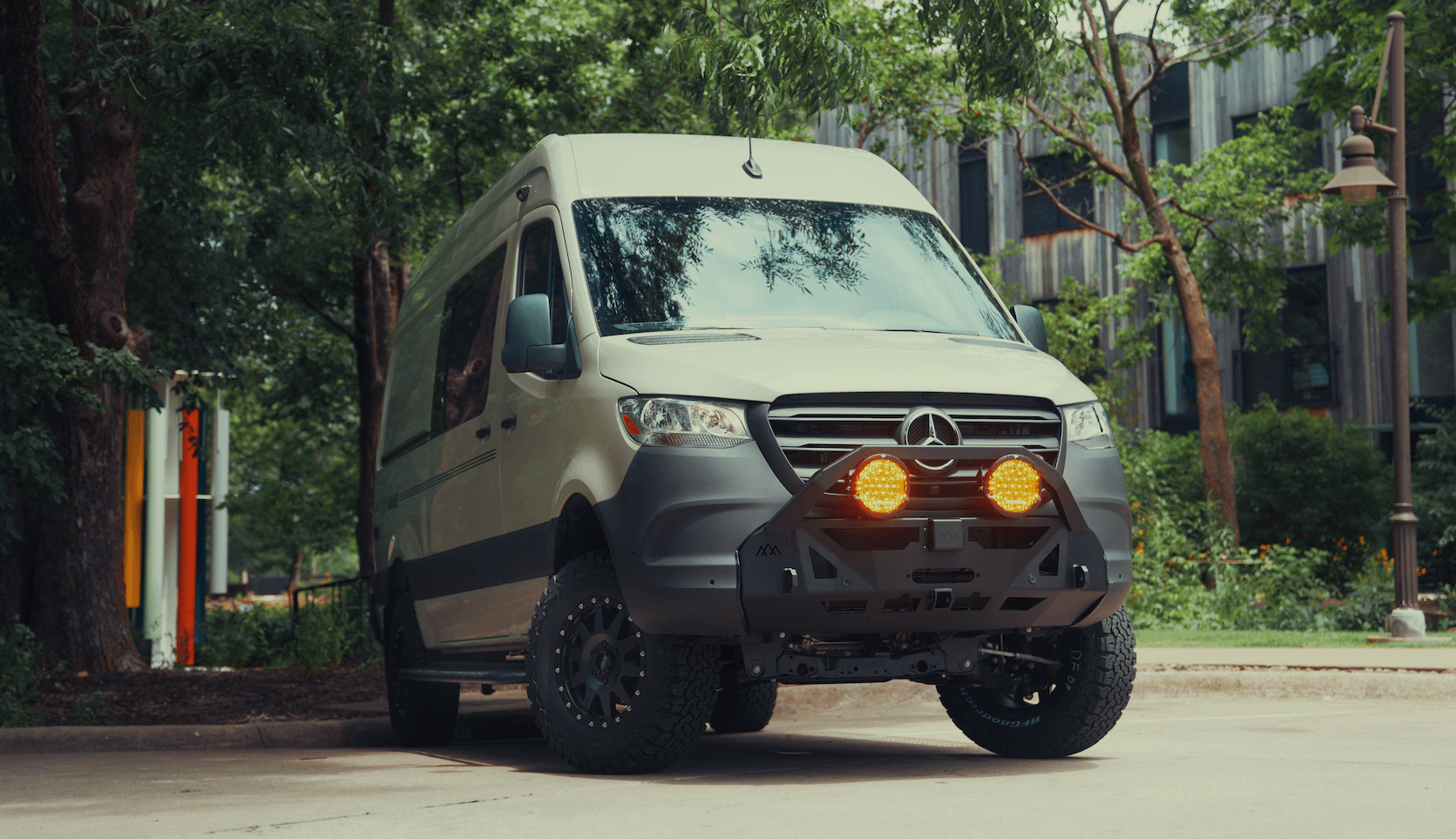Recreational Vans

If you ask five owners what mpg a Sprinter gets, you will hear five different answers. There is a reason. These vans span multiple generations, engines, wheelbases, roof heights, and drivetrains, and most are built for cargo, campers, or work fleets. No single official rating exists because many Sprinters exceed the EPA’s light duty testing class. Real world data paints the clearest picture.
Typical ranges look like this:
Those numbers shift with speed, grade, wind, tire size, and how much weight you carry. A 144 diesel rolling at 60 mph on level roads can flirt with mid 20s. The same van at 75 mph into a headwind with a roof box and 33 inch all terrains might sit near the mid to high teens.
Sprinter mpg is mostly a story about air, weight, and rolling resistance. The taller the roof and the more gear you place on top, the more the van pushes air like a billboard. Every pound added inside increases the work the engine performs on hills and during acceleration. Tires, lift height, and driveline also matter.
Diesel Sprinters generally edge out gas versions on highway routes thanks to efficient low rpm torque and taller gearing. Modern 2.0 liter diesel four cylinder models can deliver low 20s on open road in a 144 2WD cargo layout. The gas 2.0 turbo four trades some highway efficiency for smoother cold starts and wider fuel availability, often landing in the mid to high teens. City driving narrows the gap since both fuel types spend more time accelerating and idling.
Drivers notice big swings between a stock cargo van and a finished camper. The following elements influence results more than any single spec line.
Every 200 to 300 pounds can shave a few tenths of a mpg, and a full camper conversion can add 1200 to 2000 pounds. Roof racks, cargo boxes, light bars, and side ladders add frontal area and turbulence. Even a clean, low profile rack can reduce highway mpg by 0.5 to 1.5 depending on speed. A tall awning is minor alone but noticeable combined with other items.
Air resistance grows with the square of speed. A Sprinter that returns 22 mpg at 60 mph may see 18 mpg at 70 and 16 mpg at 75 under the same conditions. Mountain passes lower mpg on the climb but some of that returns on the descent if you can coast and regenerate a little through engine braking. Cold temps, winter fuel blends, and headwinds further trim efficiency.
Aggressive all terrain tread, larger diameter tires, and suspension lifts increase drag and rotational inertia. Expect 1 to 3 mpg loss with heavy tread and oversize diameter, more if paired with a lift and roof gear. 4x4 or AWD adds capability but carries extra mass and driveline losses, cutting another 1 to 2 mpg versus a comparable 2WD.
Sprinter generations and powertrains influence expectations, especially when comparing used vans.
Note on ratings: many Sprinter configurations exceed 8500 lbs GVWR, so official EPA window sticker mpg is not provided. That is why owner logs and long trip averages carry more value than brochure specs.
The steering wheel is a fuel saving tool. Small habits stack up to meaningful range gains.
Build speed with moderate throttle, keep following distance long, and avoid sharp stabs of brake and gas. On rolling terrain, manual throttle can beat cruise control by allowing a slight speed drop on climbs and recovery on descents. In wind or rain, back off a few mph to stay in the efficient zone.
Engines and transmissions sip less when everything is clean and calibrated. Fresh air filters, correct oil, proper DEF function, and timely injector service protect diesel efficiency. Correct tire pressure and balanced wheels reduce drag. Misaligned doors or flapping fairings sound minor but they disturb airflow.
Sprinter tanks vary by model, but a common 24.5 gallon capacity paired with 18 mpg yields roughly 440 miles to dry, and realistic refuel intervals around 350 to 400 miles. Heavier camper builds at 15 mpg shorten that to about 300 miles between stops. In remote regions, carry extra fuel safely, and plan for headwinds or long climbs.
Conversion choices steer long term fuel costs. Materials, layout, storage strategy, and exterior attachments change mass and drag. Lightweight structural panels, smart water storage, compact power systems, and interior bike or board mounts help preserve mpg. Exterior ladders, large boxes, and tire carriers are practical, but each one costs a bit of efficiency. The right balance matches your travel style.
What mpg does a Sprinter get is best answered with a range. Expect a well maintained 144 diesel to live around 20 to 24 mpg highway when light and clean, a 170 diesel to land mostly in the high teens to low 20s, and gas models to sit a couple mpg lower. Weight, roof gear, tire choice, speed, and drivetrain are the big levers, and small driving habits turn those levers further in your favor.
If you want a camper that sips fuel instead of gulping it, a thoughtful build makes the difference. We prioritize weight smart cabinetry, balanced storage, low profile exterior solutions, and the right tire and suspension pairing for your routes. The result is a Sprinter that drives easier, rides quieter, and stretches each tank.
Ready to plan your van:
Tell us your driving style, destinations, and must have gear. We will design a build that protects mpg without sacrificing comfort, using proven materials and clean exterior solutions. Share a few details and we will map a smart, efficient Sprinter around you.
Want a Sprinter build that travels farther on every gallon? Tell us how you drive and we will design a lighter, smarter layout with the right tires, gearing, power system, and storage. Fill out the form to start your custom plan and see how OZK turns efficiency into real range.
ADDRESS:
6159 E Huntsville Rd, Fayetteville, AR 72701
PHONE:
(479) 326-9200
EMAIL:
info@ozkvans.com